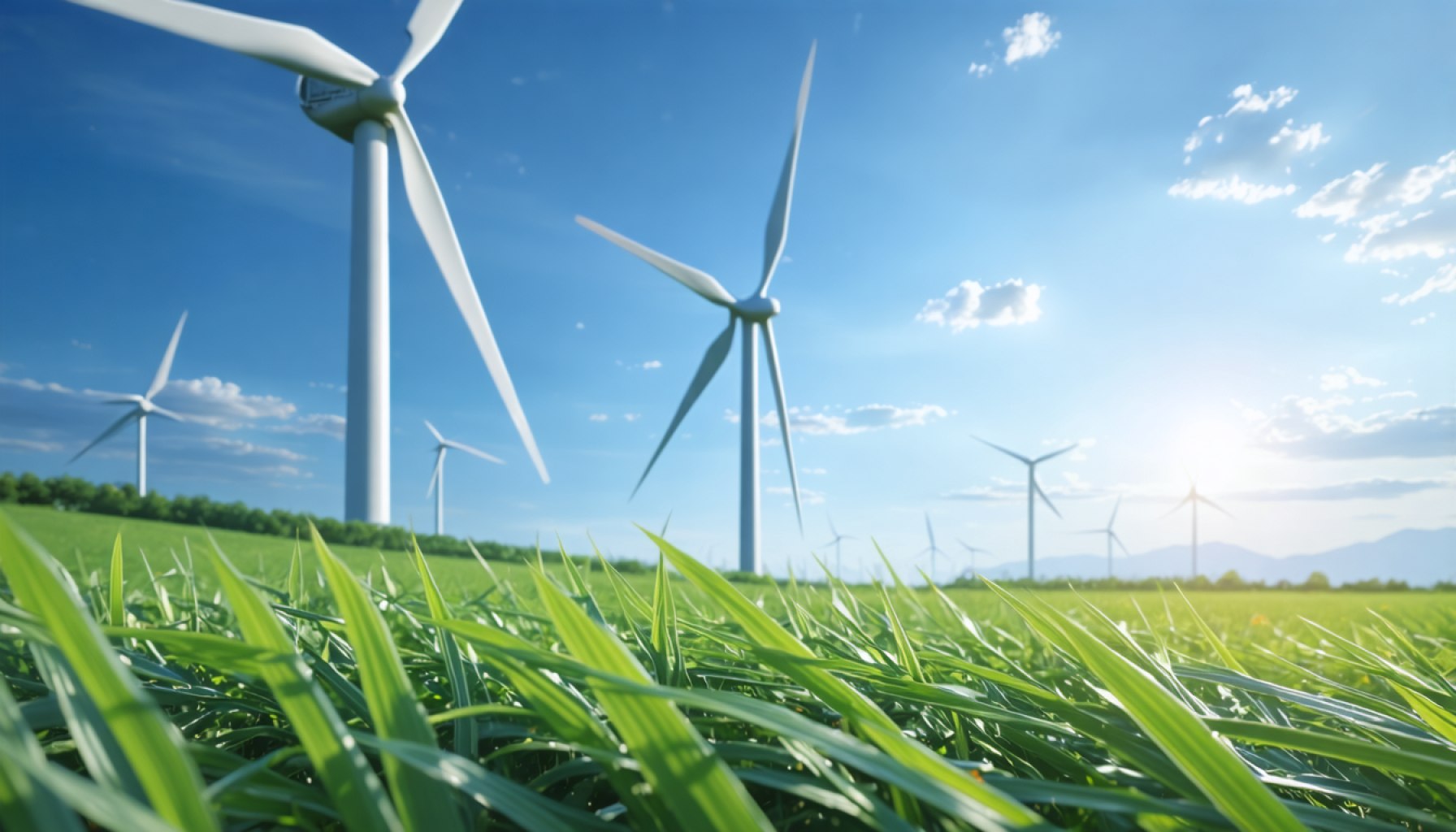- Green energy asset management is crucial for the transition to sustainability, focusing on solar, wind, and hydropower.
- Leading companies like NextEra Energy Resources and Ørsted A/S are optimizing renewable energy projects for efficiency and longevity.
- Advanced analytics and predictive maintenance systems are reducing downtime and maximizing energy output.
- Market challenges include navigating regulatory changes and managing economic factors related to installation and maintenance costs.
- The green energy sector is poised for significant growth across North America, Europe, and beyond.
- Sustainability and innovation are central to asset management, driving both environmental and financial goals.
- The industry represents a revolution, reshaping the global approach to energy production and infrastructure.
The world stands at a pivotal moment in the shift toward sustainability, with the emergence of green energy asset management paving the path forward. Picture a landscape where solar panels gleam under the sun and wind turbines rise elegantly against the skyline, their blades slicing through the air with meticulous precision. This vision of a future powered by renewable energy sources hinges on the sophisticated management of these assets, a task increasingly vital as global reliance on green energy grows.
In the realm of asset management for green energy, a meticulous balance is struck between technology, strategy, and ecology. Companies like NextEra Energy Resources and Ørsted A/S are leading the charge, managing vast portfolios of wind, solar, and hydropower projects spread across continents. These companies are not just deploying renewable technologies but fine-tuning them to enhance efficiency and prolong their lifespan.
The crux of successful asset management lies in innovation and foresight. Systems now integrate advanced analytics and predictive maintenance, allowing asset managers to take proactive measures before a turbine falters or a solar inverter fails. This dynamic approach not only minimizes downtime but maximizes output, ensuring that clean energy reaches homes and businesses without interruption.
However, the road to green energy ubiquity is fraught with challenges. Market participants need to navigate regulatory landscapes that can shift as unpredictably as the winds they harvest. Economic factors, such as fluctuating prices for installation and maintenance, further complicate the terrain. Despite these hurdles, the sector’s growth trajectory is promising, forecasting a robust expansion across North America, Europe, and beyond.
At the heart of this evolution is an unwavering commitment to sustainability and innovation. Asset managers are driven by a vision where the color green is synonymous with both environmental stewardship and financial viability. As they deploy state-of-the-art technologies to monitor performance and predict future trends, they also lay the foundation for a resilient and reliable energy infrastructure.
For investors and stakeholders, the takeaway is clear: The green energy asset management market is not merely an industry but a revolution that is redefining how we power our world. As the sector continues to innovate and expand, so too does our collective potential to create a sustainable and prosperous future.
Transforming Green Energy Asset Management: Latest Trends and Key Insights
Understanding the Core of Green Energy Asset Management
Green energy asset management is becoming indispensable as the world shifts towards sustainable energy solutions. This involves optimizing the performance and longevity of renewable energy installations like solar panels and wind turbines, ensuring these green technologies are efficiently harnessing natural resources.
Key Players and Technologies in Asset Management
Leading Companies and Innovations:
1. NextEra Energy Resources and Ørsted A/S: These pioneers in renewable energy are setting the standard by managing expansive networks of wind, solar, and hydropower projects worldwide. They emphasize precision and cutting-edge technology to maximize efficiency and asset longevity.
2. Advanced Analytics and Predictive Maintenance: Innovations in data analytics allow for real-time monitoring and predictive maintenance, minimizing downtime and optimizing performance. Technologies such as IoT devices and machine learning algorithms enable proactive management of energy assets, anticipating potential failures before they happen.
Industry Challenges and Trends
Regulatory and Economic Hurdles:
– Navigating regulatory landscapes remains a challenge as policies vary widely across regions and can change unpredictably. Asset managers must remain agile and informed to adapt to these shifts.
– Economic factors such as installation and maintenance costs fluctuate, impacting financial planning and investment returns.
Despite these challenges, projections indicate robust growth for green energy asset management, particularly in North America and Europe. According to a report from IEA, global renewable capacity is expected to grow by over 50% from 2019 to 2024.
Real-World Use Cases and Market Predictions
– Energy Efficiency Projects: By using digital twin technology, companies can simulate and improve the operations of renewable assets without physical intervention, increasing efficiency by up to 20%.
– Market Expansion: With the push for net-zero emission goals, expect an increase in investments and technological advancements in the US and EU markets. The market is anticipated to exceed USD 75 billion by 2027, as per a report by Markets and Markets.
Pros and Cons Overview
Pros:
– Reduction of carbon footprint and advancement towards sustainable energy.
– Enhanced operational efficiency with the incorporation of AI and IoT technologies.
– Potential for significant cost savings in the long term.
Cons:
– High initial setup and technology integration costs.
– Regulatory challenges that require constant monitoring and adaptation.
– Dependence on technological advancements and data security risks.
Actionable Recommendations
1. Stay Updated on Policies: Keep abreast of regulatory changes to adapt strategies effectively and leverage potential incentives.
2. Leverage Technology: Invest in analytical and predictive maintenance tools to preemptively address system failures and enhance the lifecycle of assets.
3. Engage in Continuous Learning: Regularly update skills and knowledge in green technologies and asset management practices through courses and industry events.
Conclusion
The green energy asset management sector is at the forefront of a global revolution toward sustainable practices. With technological advancements and strategic foresight, it promises not just environmental benefits but also financial rewards.
For more insights on sustainable energy management, visit International Energy Agency.
